Entering Shennongjia: Preserving the Home of Golden Snub-nosed Monkeys
Updated:2024-12-02 Source:China Green Foundation
- Nature Education Exploration Activity for “Preserving the Home of Golden Snub-nosed Monkeys” Public Welfare Project
Shennongjia golden snub-nosed monkeys are a vital population of Sichuan golden snub-nosed monkeys, serving as a flagship and indicator species for Shennongjia’s biodiversity. After experiencing multiple tectonic changes and orogenic movements, Shennongjia has become a region rich in food sources and suitable habitats for golden snub-nosed monkeys. These monkeys hold an irreplaceable representative role in the ecosystem, with their survival status directly reflecting the health of the Shennongjia ecological system. To advance Shennongjia’s ecological conservation efforts, the China Green Foundation launched the “Preserving the Home of Golden Snub-nosed Monkeys” project in 2019. The project focuses on artificially planting mixed coniferous and broad-leaved forests to restore fragmented habitats and expand golden snub-nosed monkey habitats, and conducting nature education for the public to enhance awareness and protection consciousness about golden snub-nosed monkeys and their ecological environment. These measures have resulted in a significant increase in the population of Shennongjia golden snub-nosed monkeys. In the future, the project will be carried out in collaboration with the Administration of Shennongjia National Park and the Shennongjia Golden Snub-nosed Monkey Conservation Foundation to enhance protection by expanding ecological restoration areas, strengthening scientific research and monitoring, and optimizing food sources.
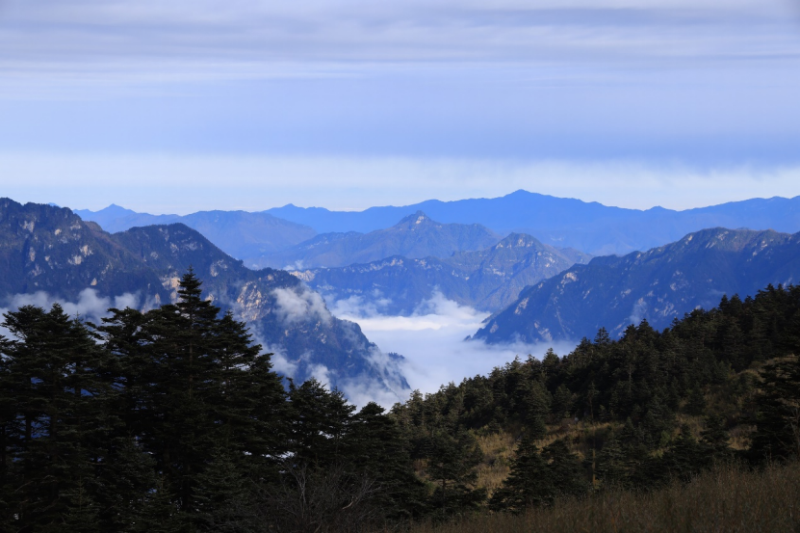 Shennongjia Forestry District
Shennongjia Forestry District
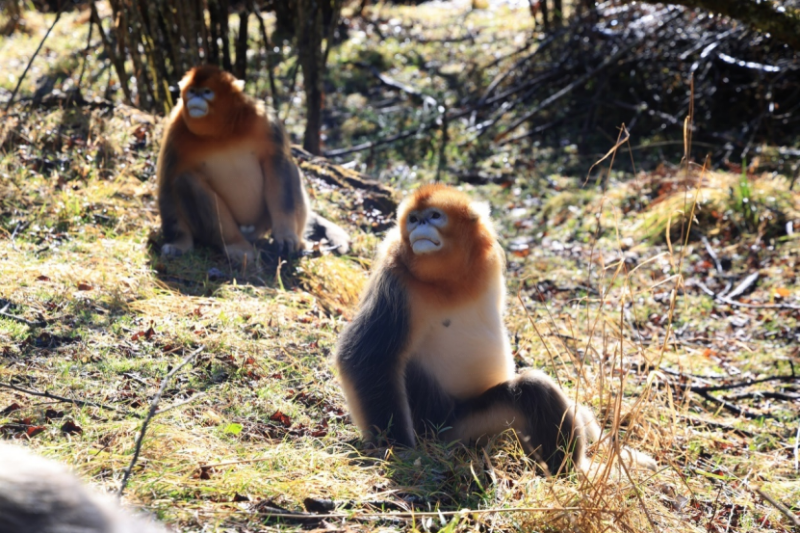 Shennongjia Golden Snub-nosed Monkeys
Shennongjia Golden Snub-nosed Monkeys
From November 19 to 22, a team composed of donor representatives, ecological conservation volunteers, and corporate representatives, ventured deep into the Shennongjia Forestry District to conduct a nature education exploration activity themed “Exploring Shennongjia, Searching for Golden Snub-nosed Monkeys”.
Entering Dalongtan, Searching for Golden Snub-nosed Monkeys
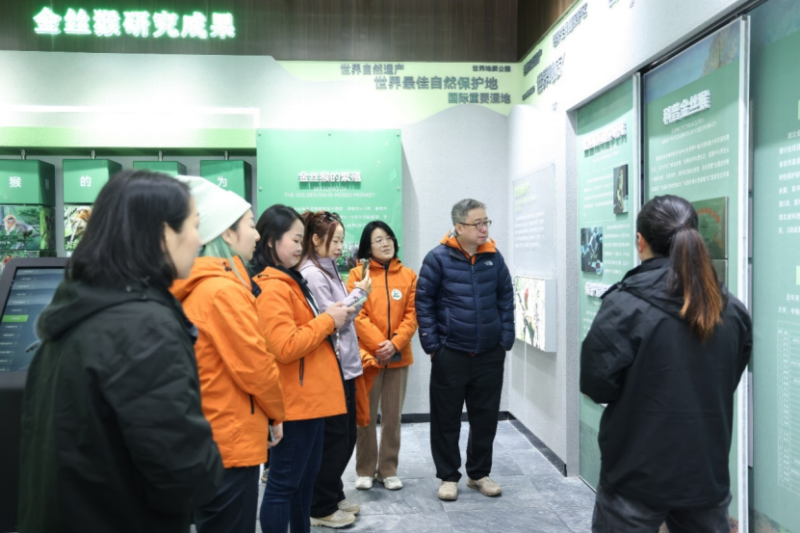 A guide is telling history of the Shennongjia golden snub-nosed monkey conservation
A guide is telling history of the Shennongjia golden snub-nosed monkey conservation
At the Shennongjia Golden Snub-nosed Monkey Research and Science Popularization Base in Dalongtan, the team members learned about the characteristics and living habits of Shennongjia golden snub-nosed monkeys. They understood the history of monkey conservation and experienced the passion and challenges of scientific research. When listening to researchers translating “monkey language”, the team members were touched by the interesting inter-species communication. Everyone hoped to meet the adorable golden snub-nosed monkeys and exchange a few words.
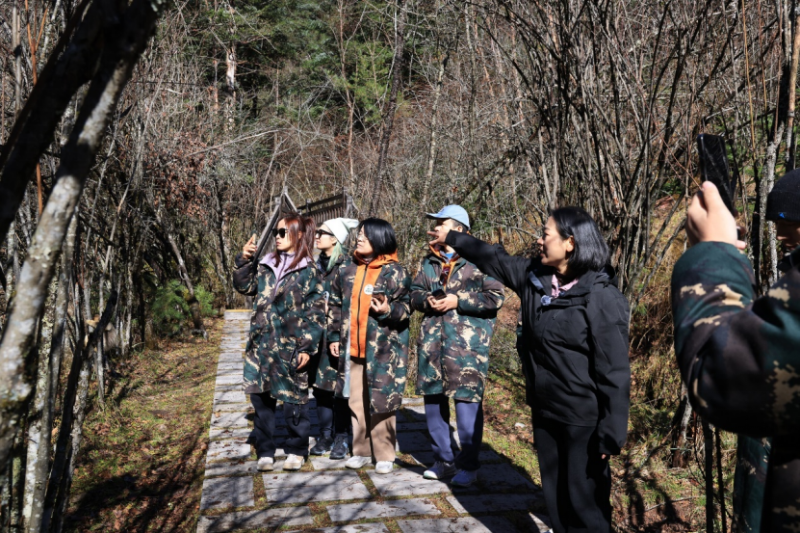 An expert is introducing the growth of the first-phase public welfare forest
An expert is introducing the growth of the first-phase public welfare forest
In the mountain forest of the research base, the team examined the growth of the first-phase public welfare forest under the “Preserving the Home of Golden Snub-nosed Monkeys” project. Base experts explained that golden snub-nosed monkeys particularly enjoy eating moss and lichen growing on tree bark, often completely stripping trees. Consequently, the first-phase forest was strategically planted throughout the research base, with approximately 2,300 trees, significantly enriching the monkeys’ food sources.
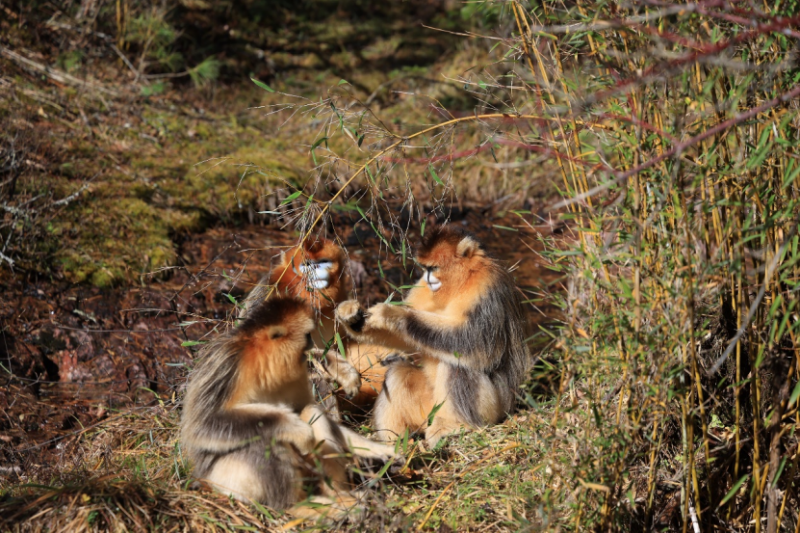 Abundant food sources in the forest for golden snub-nosed monkeys to choose from
Abundant food sources in the forest for golden snub-nosed monkeys to choose from
Walking Through Dajiuhu Wetland, Observing Subalpine Landscape
Dajiuhu Wetland is a brilliant pearl in Shennongjia’s and even China’s wetland ecosystem. It encompasses various wetland types including peat moss swamps, subalpine shallow lakes, artificial ponds, herbaceous marshes, and rivers. It serves as a refuge for many ancient relict species and an important habitat for numerous rare, endangered, and endemic Chinese species. As a subalpine basin, Dajiuhu’s water primarily originates from surrounding mountain water flows, interconnected through drainage holes and underground rivers, ultimately flowing into the Hanjiang River.
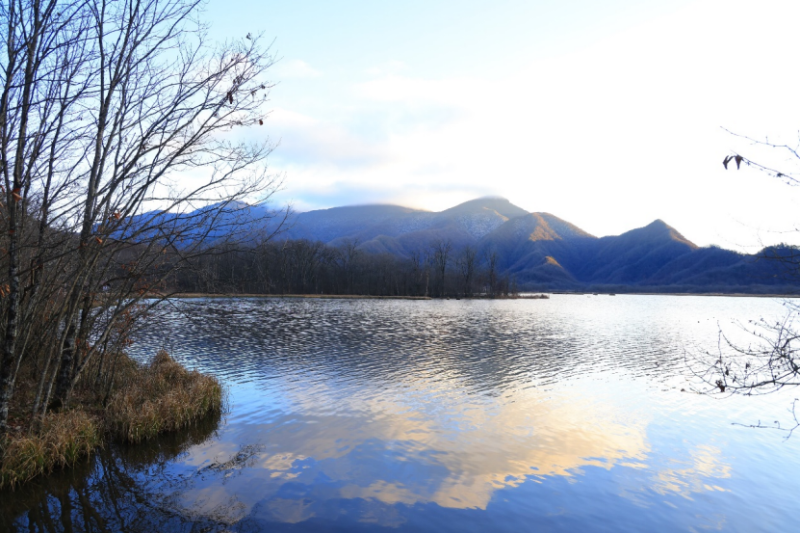 Dajiuhu Wetland
Dajiuhu Wetland
Deng Longqiang, Secretary-General of the Shennongjia Golden Snub-nosed Monkey Conservation Foundation, shared that the Hanjiang River’s water converges in the Danjiangkou Reservoir and flows to Beijing through the South-to-North Water Diversion Project. Out of every ten drops of water in Beijing, one drop comes from Dajiuhu. The team members were amazed by nature’s wonder of hidden rivers atop high mountains and impressed by the national water resource management’s extensive coverage.
Following Park Rangers to Experience Wildlife Protection
In the national park’s patrol area, rangers guided the team deep into the mountain forest. Walking swiftly through dense bamboo forests, rangers pointed out the beautiful alpine rhododendrons that bloom everywhere in April and May. Under the rangers’ guidance, the team members observed deer and wild boar droppings, which were photographed and recorded as ecological research evidence.
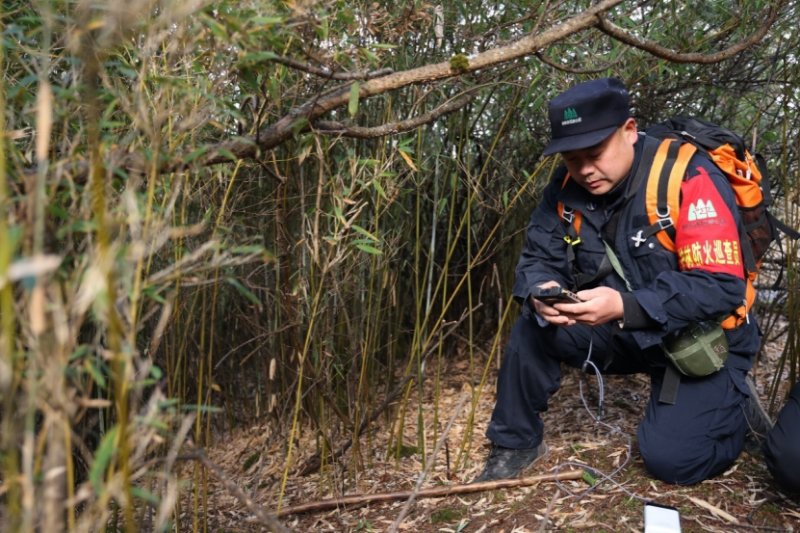 Checking infrared cameras is another crucial part of patrol work. Wildlife images captured by infrared cameras provide significant support for scientific research and monitoring.
Checking infrared cameras is another crucial part of patrol work. Wildlife images captured by infrared cameras provide significant support for scientific research and monitoring.
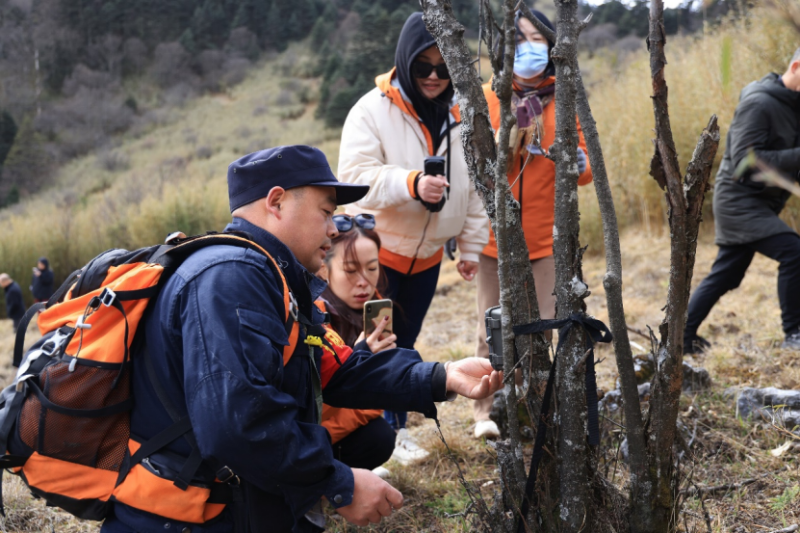 Checking wildlife images captured by infrared cameras
Checking wildlife images captured by infrared cameras
Planting Trees in Guanmenshan, Adding a Forest to the Home of Golden Snub-nosed Monkeys
The second-phase public welfare forest under the “Preserving the Home of Golden Snub-nosed Monkeys” project is located in Guanmenshan area. The team members collaboratively planted precious dove tree saplings, symbolizing society’s support and commitment to ecological conservation.
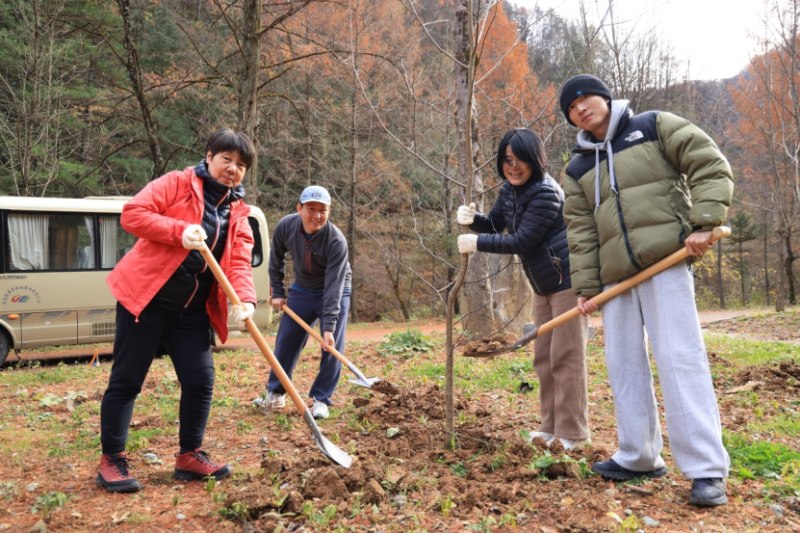 Team members are planting saplings in groups
Team members are planting saplings in groups
According to Shao Ronghu from the Shennongjia Golden Snub-nosed Monkey Conservation Foundation, this mountain area is frequently visited by golden snub-nosed monkey groups. In order to increase food-source plants in this region, the second-phase public welfare forest planting will be carried out here, in the hope of gradually expanding the monkeys’ activity range.
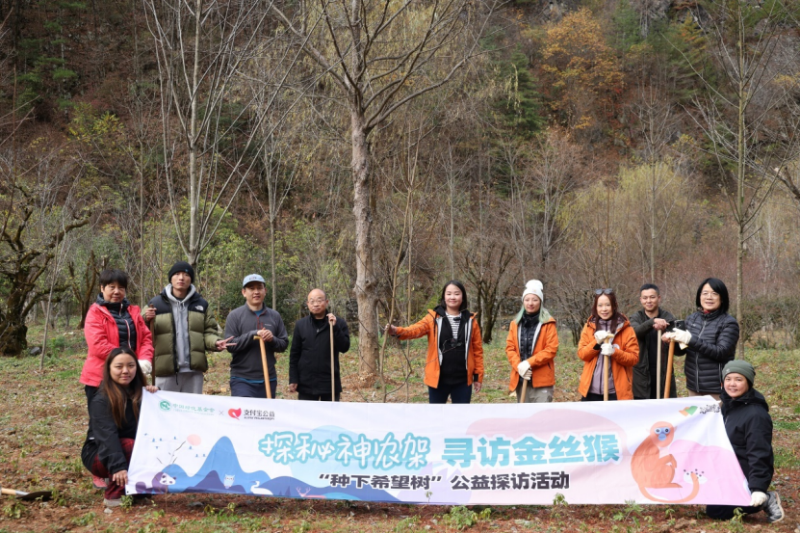 Team members have planted more than ten dove tree saplings together
Team members have planted more than ten dove tree saplings together
Brainstorming and Discussing Golden Snub-nosed Monkey Conservation
In the meeting room of the Shennongjia National Park Information Center, the team and project executives for “Preserving the Home of Golden Snub-nosed Monkeys” held a symposium on forest biodiversity conservation. Golden snub-nosed monkey conservation experts introduced the national park’s basic situation and conservation progress.
 An expert is introducing the role of the “Preserving the Home of Golden Snub-nosed Monkeys” project in biodiversity conservation
An expert is introducing the role of the “Preserving the Home of Golden Snub-nosed Monkeys” project in biodiversity conservation
All team members agreed that “Every ecological conservation measure is an indispensable part of constructing a healthy ecosystem.” They offered suggestions for the “Preserving the Home of Golden Snub-nosed Monkeys” project, including utilizing social media to showcase more updates on golden snub-nosed monkey conservation and organizing hiking activities in open areas to allow people to experience the ecological beauty firsthand.
Through this exploration activity, participants not only witnessed the monkeys’ agility and charm but also deeply understood the significance of ecological conservation. Every planting effort, every patrol, and every scientific research monitoring represent a genuine declaration of love for this miraculous land. In the future, we will continue to work together to protect the golden snub-nosed monkeys’ home with love and responsibility, ensuring the sustainability of Shennongjia’s biodiversity.
Address:36 Chulin Road, Muyu Town, Shennongjia Forestry District, Hubei Province 鄂ICP备18005077号-3
Phone:0719-3453368



